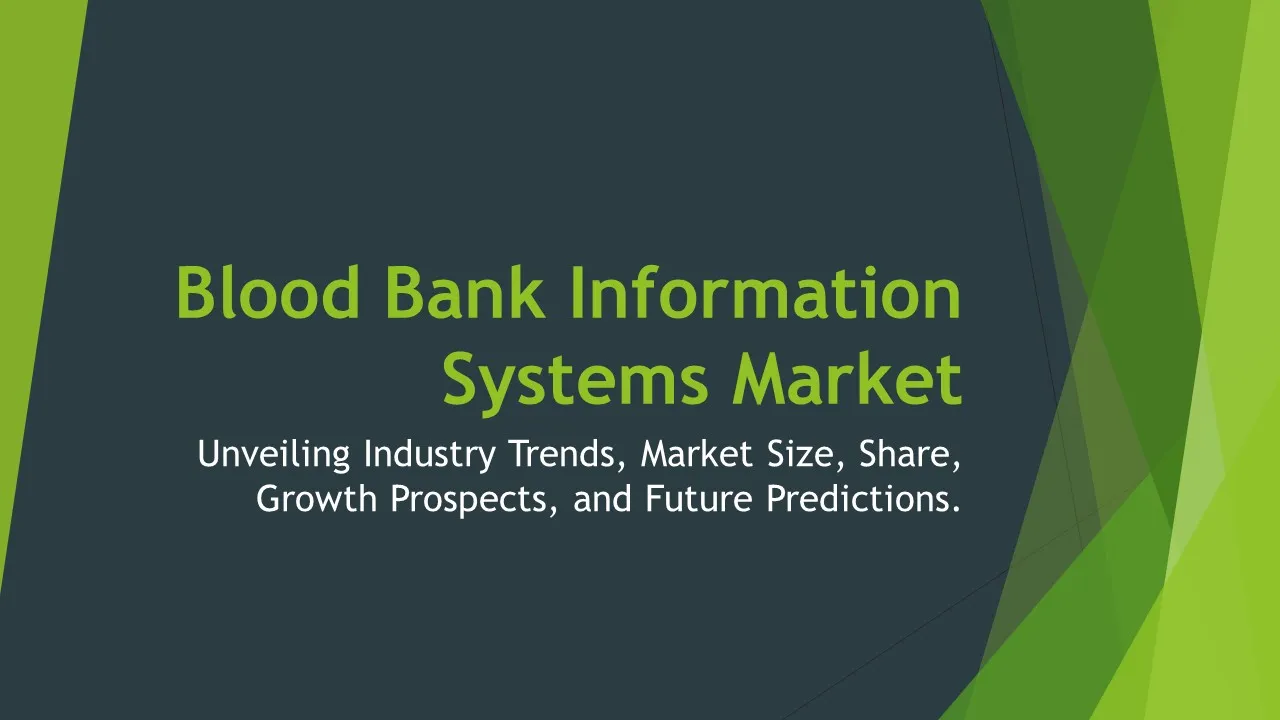Convergent Billing
Convergent Billing Market Segments - by Deployment Type (Cloud-based, On-premises), Component (Software, Services), Billing Type (Prepaid, Postpaid), End-User (Telecom Service Providers, Enterprises), and Region (North America, Europe, Asia Pacific, Latin America, Middle East & Africa) - Global Industry Analysis, Growth, Share, Size, Trends, and Forecast 2025-2035
- Report Preview
- Table Of Content
- Segments
- Methodology
Convergent Billing Market Outlook
The global convergent billing market is expected to reach approximately USD 12 billion by 2035, growing at a compound annual growth rate (CAGR) of about 12.5% during the forecast period from 2025 to 2035. This robust growth can be attributed to the increasing demand for integrated billing solutions that can efficiently manage a diverse range of services across telecom and other sectors. As businesses continue to prioritize customer experience and operational efficiency, the need for convergent billing systems that can handle multiple billing types seamlessly is becoming more critical. Furthermore, the rapid digital transformation across industries, driven by technological advancements, is propelling the adoption of convergent billing solutions to streamline operations and enhance revenue management. The growing trend of subscription-based services is also pushing service providers to implement more sophisticated billing systems that can cater to complex pricing models.
Growth Factor of the Market
One of the primary growth factors for the convergent billing market is the escalating demand for seamless and unified billing systems that support various services under a single platform. This transition has been catalyzed by the surge in digital services, prompting telecom operators and enterprises to look for solutions that can simplify billing processes while enhancing customer satisfaction. In addition, the proliferation of mobile devices and advanced technological platforms is creating opportunities for businesses to deploy convergent billing systems that cater to a range of customer needs. Moreover, the increasing trend towards subscription-based models in various industries, including telecom, utilities, and SaaS, has heightened the necessity for robust billing solutions that can handle both prepaid and postpaid billing efficiently. Furthermore, ongoing innovations in cloud technologies are enabling more flexible and scalable billing solutions, making them attractive for small to medium enterprises looking to optimize their revenue management.
Key Highlights of the Market
- The convergent billing market is projected to witness significant growth fueled by the demand for integrated billing solutions.
- Cloud-based deployment models are becoming increasingly popular among businesses due to their scalability and cost-effectiveness.
- The telecom service provider segment is expected to dominate the market owing to the high complexity of billing requirements.
- Prepaid billing systems are gaining traction as consumers prefer flexible payment options, leading to innovative pricing strategies.
- Geographically, North America is anticipated to hold a significant market share, driven by the presence of leading technology providers.
By Deployment Type
Cloud-based:
Cloud-based deployment of convergent billing solutions has gained immense traction, primarily due to its inherent advantages such as scalability, flexibility, and cost efficiency. Businesses increasingly prefer cloud solutions as they reduce the need for extensive on-premise infrastructure, allowing companies to shift their focus towards core operations. With cloud-based billing systems, organizations can benefit from automatic updates, improved data security, and easier access to billing information from any location. Additionally, these solutions enable quick implementation and deployment, which is particularly beneficial for businesses in need of rapid scaling and adaptation to market demands. The ability of cloud solutions to integrate easily with other cloud-based applications also enhances operational efficiency, making them an attractive option for many enterprises.
On-premises:
On-premises deployment of convergent billing systems continues to hold significance, especially among larger enterprises that prioritize data control and security. Organizations that handle sensitive customer information often opt for on-premises solutions to maintain strict security protocols and compliance with regulations. This model allows companies to customize their billing systems to fit specific operational requirements, offering greater control over the entire billing process. However, the higher initial investment and ongoing maintenance costs associated with on-premises systems may deter smaller businesses from adopting this model. Nevertheless, for those with established IT infrastructures, on-premises solutions provide comprehensive billing capabilities that can be tailored to meet complex business needs while ensuring data integrity.
By Component
Software:
The software segment of the convergent billing market plays a vital role, as it encompasses the core functionalities required for comprehensive billing processes. Convergent billing software integrates various billing and revenue management features, enabling organizations to manage multiple services and customer accounts effectively. With the rise of digital services and the need for flexible pricing models, software solutions are designed to accommodate diverse billing types, including prepaid and postpaid. This segment is characterized by continuous innovation, with providers regularly updating software to align with industry trends and customer needs. The increasing complexity of billing requirements across sectors further propels the demand for advanced software solutions that can enhance operational efficiency and improve customer experience.
Services:
The services segment, encompassing consulting, implementation, and support services, is crucial for the successful deployment and operation of convergent billing systems. Many organizations rely on specialized service providers to guide them through the complexities of integrating billing solutions into their existing infrastructure. These services ensure that businesses can optimize their billing processes, reduce implementation time, and achieve their desired outcomes. Additionally, ongoing support services are essential for addressing potential issues that may arise post-deployment, thus maintaining system functionality and reliability. As companies increasingly recognize the importance of expert guidance and support, this segment is poised for growth alongside the expanding adoption of convergent billing solutions.
By Billing Type
Prepaid:
The prepaid billing segment is witnessing significant growth, fueled by changing consumer preferences towards flexible payment options. With prepaid solutions, customers can pay for services upfront, allowing them to manage their finances more effectively and avoid unexpected charges. This model is particularly popular among younger consumers who appreciate the transparency and control offered by prepaid solutions. Businesses are increasingly adopting prepaid billing systems to capture this demand, leading to innovative pricing strategies that cater to various customer segments. Furthermore, the growth of digital wallets and mobile payment systems has bolstered the popularity of prepaid billing, as these technologies enable seamless transactions and enhance the overall customer experience. As a result, the prepaid billing segment is expected to continue growing, driven by the evolving landscape of consumer behavior.
Postpaid:
Postpaid billing remains a cornerstone of the convergent billing landscape, particularly in sectors such as telecom where customers frequently prefer to pay for services after usage. This billing model allows consumers to access a range of services without the need for upfront payments, providing them with greater flexibility and convenience. As competition among service providers intensifies, there is an increasing emphasis on delivering enhanced value through postpaid plans that may include features such as unlimited data, family plans, and rewards programs. The postpaid segment is also seeing the integration of advanced analytics tools, enabling providers to gain insights into customer behavior and tailor offerings accordingly. As service providers continue to innovate and enhance their postpaid offerings, this segment is expected to maintain its significance within the convergent billing market.
By User
Telecom Service Providers:
Telecom service providers represent a significant user segment for convergent billing systems, given the complex billing requirements associated with a diverse range of services offered. These providers face the challenge of managing multiple customer accounts, service types, and billing cycles, making an efficient convergent billing solution essential for their operations. With the increasing trend toward bundled services and subscription models, telecom companies are turning to advanced billing systems that can streamline processes and improve customer satisfaction. Additionally, the integration of customer relationship management (CRM) features within billing solutions allows telecom providers to enhance customer engagement and retention. As the telecom landscape continues to evolve, the demand for robust convergent billing solutions among service providers is expected to grow significantly.
Enterprises:
Enterprises across various industries are also key users of convergent billing systems, leveraging these solutions to manage complex billing scenarios and improve operational efficiency. As businesses expand their service offerings and adopt subscription-based models, the need for integrated billing platforms becomes more pronounced. Enterprises benefit from convergent billing systems that can accommodate multiple billing types, helping them streamline revenue management and reduce administrative overhead. Additionally, enterprises are increasingly focused on enhancing customer experiences through personalized billing solutions that offer flexibility and transparency. As digital transformation continues to reshape the business landscape, the adoption of convergent billing systems among enterprises is anticipated to increase, driving growth in this user segment.
By Region
The regional analysis of the convergent billing market reveals distinctive trends and growth patterns across different areas globally. North America is projected to dominate the market, accounting for approximately 40% of the total market share, driven by the presence of numerous technology providers and a robust telecommunications infrastructure. The region is characterized by high levels of investment in innovative billing solutions, as companies strive to enhance operational efficiencies and customer experiences. Moreover, the increasing adoption of cloud-based billing systems in North America is contributing to the overall growth of the market, with a CAGR of around 13% expected during the forecast period. As businesses across various sectors recognize the benefits of convergent billing systems, North America is likely to maintain its leadership position in the coming years.
In Europe, the convergent billing market is anticipated to witness steady growth, fueled by the increasing demand for integrated billing solutions across telecom and utility sectors. Europe is expected to hold about 25% of the total market share, with significant investments being made into digital transformation initiatives across various industries. The region is experiencing a shift towards subscription-based services, prompting service providers to adopt advanced billing systems capable of handling diverse pricing models. The Asia Pacific region is also emerging as a key player in the convergent billing market, projected to grow at a CAGR of 14% during the forecast period. This growth is driven by the rapid digitalization of services, increasing mobile penetration, and a burgeoning e-commerce sector in countries such as India, China, and Japan.
Opportunities
The convergent billing market presents substantial opportunities for growth and expansion, especially as businesses increasingly recognize the value of integrated billing solutions. One of the most promising opportunities lies in the rise of subscription-based services across various sectors, including telecom, utilities, and digital media. As more companies transition to subscription models, the demand for advanced billing systems that can effectively manage complex pricing structures and customer accounts is escalating. Additionally, the ongoing advancements in cloud computing technology provide an avenue for the development of more flexible and scalable billing solutions, enabling businesses of all sizes to optimize their revenue management processes. Furthermore, as organizations increasingly prioritize customer experience, there is a growing need for personalized billing solutions that offer transparency and flexibility in payment options, which can drive further innovations in the convergent billing market.
Moreover, as digital payment methods and mobile wallets gain popularity, there is an opportunity for convergent billing solutions to integrate seamlessly with these platforms, enhancing the overall customer experience. This integration can facilitate smoother transactions and improve payment collection processes, ultimately contributing to increased revenue for businesses. Additionally, as regulatory requirements around data security and privacy become more stringent, companies offering convergent billing solutions can leverage their expertise in compliance to differentiate themselves in the market. Overall, the evolving landscape of consumer behavior and technological advancements presents a myriad of opportunities for growth and innovation within the convergent billing market.
Threats
While the convergent billing market offers numerous opportunities, it also faces various threats that could impede growth and expansion. One of the significant threats is the increasing competition among providers, which may lead to price wars and reduced profit margins. As more companies enter the convergent billing space, particularly within the cloud-based segment, established players may find it challenging to maintain their market share and profitability. Additionally, the rapid pace of technological advancements necessitates continuous investment in innovation, which can strain resources for some companies. The constant need to adapt to changing customer preferences and regulatory requirements can also pose challenges for billing solution providers, as failure to keep pace with these changes can result in lost business opportunities and customer trust.
Moreover, security concerns surrounding data breaches and cyber threats represent a significant risk for organizations operating within the convergent billing market. As billing systems handle sensitive customer information, any security lapse can lead to severe reputational damage and financial losses. Companies must invest in robust security measures and ensure compliance with data protection regulations to mitigate these risks. Additionally, the complexity of integrating convergent billing solutions with existing systems may also deter some enterprises from adopting these technologies, particularly small to medium-sized businesses lacking the necessary resources. Overall, these threats necessitate strategic planning and innovation to navigate the challenges faced by the convergent billing market.
Competitor Outlook
- Oracle Corporation
- Amdocs Limited
- SAP SE
- Ericsson
- NetCracker Technology
- CGI Group
- Zuora Inc.
- BillingPlatform
- Huawei Technologies
- Comptel Corporation
- FIS Global
- OpenText Corporation
- Matrixx Software
- Cerillion Technologies
- Aria Systems
The competitive landscape of the convergent billing market is characterized by the presence of several key players that are continually innovating to meet the evolving needs of businesses and consumers. Major companies like Oracle Corporation and Amdocs Limited dominate the market, leveraging their extensive industry experience and technological expertise to provide comprehensive billing solutions. Oracle's convergent charging and billing solutions are recognized for their flexibility and scalability, enabling service providers to manage complex billing scenarios effectively. Amdocs, with its deep understanding of the telecommunications landscape, offers tailored billing solutions that enhance customer experience and drive revenue growth for its clients.
Similarly, SAP SE has established a strong foothold in the convergent billing market by offering integrated solutions that combine billing, invoicing, and revenue management capabilities. Their solutions are designed to help organizations adapt to changing market dynamics while optimizing their billing processes. Ericsson, on the other hand, provides advanced billing and charging systems that cater to the unique needs of telecom operators, focusing on enhancing operational efficiency and customer engagement. Other key players like NetCracker Technology and CGI Group are also making significant strides in the market, providing innovative solutions that support the transition to digital services and subscription-based models.
In addition to these established players, emerging companies such as Zuora Inc. and BillingPlatform are gaining traction by offering specialized cloud-based billing solutions tailored for specific industries. Zuora, known for its subscription management platform, enables businesses to automate billing processes while providing insights into customer behavior and preferences. BillingPlatform's flexible architecture allows organizations to design customized billing models that align with their unique business requirements. As the convergent billing market continues to evolve, these companies are expected to play a crucial role in shaping the future landscape of billing solutions by addressing the diverse needs of businesses and consumers alike.
1 Appendix
- 1.1 List of Tables
- 1.2 List of Figures
2 Introduction
- 2.1 Market Definition
- 2.2 Scope of the Report
- 2.3 Study Assumptions
- 2.4 Base Currency & Forecast Periods
3 Market Dynamics
- 3.1 Market Growth Factors
- 3.2 Economic & Global Events
- 3.3 Innovation Trends
- 3.4 Supply Chain Analysis
4 Consumer Behavior
- 4.1 Market Trends
- 4.2 Pricing Analysis
- 4.3 Buyer Insights
5 Key Player Profiles
- 5.1 SAP SE
- 5.1.1 Business Overview
- 5.1.2 Products & Services
- 5.1.3 Financials
- 5.1.4 Recent Developments
- 5.1.5 SWOT Analysis
- 5.2 Ericsson
- 5.2.1 Business Overview
- 5.2.2 Products & Services
- 5.2.3 Financials
- 5.2.4 Recent Developments
- 5.2.5 SWOT Analysis
- 5.3 CGI Group
- 5.3.1 Business Overview
- 5.3.2 Products & Services
- 5.3.3 Financials
- 5.3.4 Recent Developments
- 5.3.5 SWOT Analysis
- 5.4 FIS Global
- 5.4.1 Business Overview
- 5.4.2 Products & Services
- 5.4.3 Financials
- 5.4.4 Recent Developments
- 5.4.5 SWOT Analysis
- 5.5 Zuora Inc.
- 5.5.1 Business Overview
- 5.5.2 Products & Services
- 5.5.3 Financials
- 5.5.4 Recent Developments
- 5.5.5 SWOT Analysis
- 5.6 Aria Systems
- 5.6.1 Business Overview
- 5.6.2 Products & Services
- 5.6.3 Financials
- 5.6.4 Recent Developments
- 5.6.5 SWOT Analysis
- 5.7 Amdocs Limited
- 5.7.1 Business Overview
- 5.7.2 Products & Services
- 5.7.3 Financials
- 5.7.4 Recent Developments
- 5.7.5 SWOT Analysis
- 5.8 BillingPlatform
- 5.8.1 Business Overview
- 5.8.2 Products & Services
- 5.8.3 Financials
- 5.8.4 Recent Developments
- 5.8.5 SWOT Analysis
- 5.9 Matrixx Software
- 5.9.1 Business Overview
- 5.9.2 Products & Services
- 5.9.3 Financials
- 5.9.4 Recent Developments
- 5.9.5 SWOT Analysis
- 5.10 Oracle Corporation
- 5.10.1 Business Overview
- 5.10.2 Products & Services
- 5.10.3 Financials
- 5.10.4 Recent Developments
- 5.10.5 SWOT Analysis
- 5.11 Comptel Corporation
- 5.11.1 Business Overview
- 5.11.2 Products & Services
- 5.11.3 Financials
- 5.11.4 Recent Developments
- 5.11.5 SWOT Analysis
- 5.12 Huawei Technologies
- 5.12.1 Business Overview
- 5.12.2 Products & Services
- 5.12.3 Financials
- 5.12.4 Recent Developments
- 5.12.5 SWOT Analysis
- 5.13 OpenText Corporation
- 5.13.1 Business Overview
- 5.13.2 Products & Services
- 5.13.3 Financials
- 5.13.4 Recent Developments
- 5.13.5 SWOT Analysis
- 5.14 NetCracker Technology
- 5.14.1 Business Overview
- 5.14.2 Products & Services
- 5.14.3 Financials
- 5.14.4 Recent Developments
- 5.14.5 SWOT Analysis
- 5.15 Cerillion Technologies
- 5.15.1 Business Overview
- 5.15.2 Products & Services
- 5.15.3 Financials
- 5.15.4 Recent Developments
- 5.15.5 SWOT Analysis
- 5.1 SAP SE
6 Market Segmentation
- 6.1 Convergent Billing Market, By User
- 6.1.1 Telecom Service Providers
- 6.1.2 Enterprises
- 6.2 Convergent Billing Market, By Component
- 6.2.1 Software
- 6.2.2 Services
- 6.3 Convergent Billing Market, By Billing Type
- 6.3.1 Prepaid
- 6.3.2 Postpaid
- 6.4 Convergent Billing Market, By Deployment Type
- 6.4.1 Cloud-based
- 6.4.2 On-premises
- 6.1 Convergent Billing Market, By User
7 Competitive Analysis
- 7.1 Key Player Comparison
- 7.2 Market Share Analysis
- 7.3 Investment Trends
- 7.4 SWOT Analysis
8 Research Methodology
- 8.1 Analysis Design
- 8.2 Research Phases
- 8.3 Study Timeline
9 Future Market Outlook
- 9.1 Growth Forecast
- 9.2 Market Evolution
10 Geographical Overview
- 10.1 Europe - Market Analysis
- 10.1.1 By Country
- 10.1.1.1 UK
- 10.1.1.2 France
- 10.1.1.3 Germany
- 10.1.1.4 Spain
- 10.1.1.5 Italy
- 10.1.1 By Country
- 10.2 Asia Pacific - Market Analysis
- 10.2.1 By Country
- 10.2.1.1 India
- 10.2.1.2 China
- 10.2.1.3 Japan
- 10.2.1.4 South Korea
- 10.2.1 By Country
- 10.3 Latin America - Market Analysis
- 10.3.1 By Country
- 10.3.1.1 Brazil
- 10.3.1.2 Argentina
- 10.3.1.3 Mexico
- 10.3.1 By Country
- 10.4 North America - Market Analysis
- 10.4.1 By Country
- 10.4.1.1 USA
- 10.4.1.2 Canada
- 10.4.1 By Country
- 10.5 Convergent Billing Market by Region
- 10.6 Middle East & Africa - Market Analysis
- 10.6.1 By Country
- 10.6.1.1 Middle East
- 10.6.1.2 Africa
- 10.6.1 By Country
- 10.1 Europe - Market Analysis
11 Global Economic Factors
- 11.1 Inflation Impact
- 11.2 Trade Policies
12 Technology & Innovation
- 12.1 Emerging Technologies
- 12.2 AI & Digital Trends
- 12.3 Patent Research
13 Investment & Market Growth
- 13.1 Funding Trends
- 13.2 Future Market Projections
14 Market Overview & Key Insights
- 14.1 Executive Summary
- 14.2 Key Trends
- 14.3 Market Challenges
- 14.4 Regulatory Landscape
Segments Analyzed in the Report
The global Convergent Billing market is categorized based on
By Deployment Type
- Cloud-based
- On-premises
By Component
- Software
- Services
By Billing Type
- Prepaid
- Postpaid
By User
- Telecom Service Providers
- Enterprises
By Region
- North America
- Europe
- Asia Pacific
- Latin America
- Middle East & Africa
Key Players
- Oracle Corporation
- Amdocs Limited
- SAP SE
- Ericsson
- NetCracker Technology
- CGI Group
- Zuora Inc.
- BillingPlatform
- Huawei Technologies
- Comptel Corporation
- FIS Global
- OpenText Corporation
- Matrixx Software
- Cerillion Technologies
- Aria Systems
- Publish Date : Jan 21 ,2025
- Report ID : IT-69408
- No. Of Pages : 100
- Format : |
- Ratings : 4.5 (110 Reviews)









